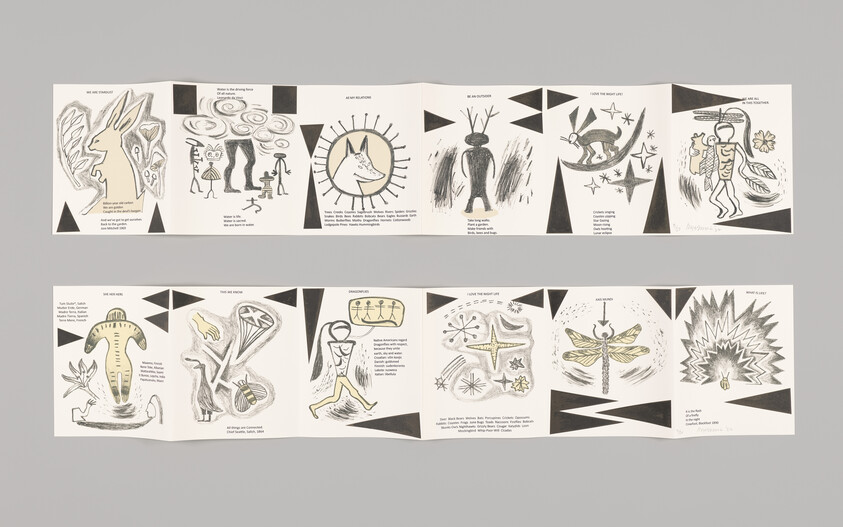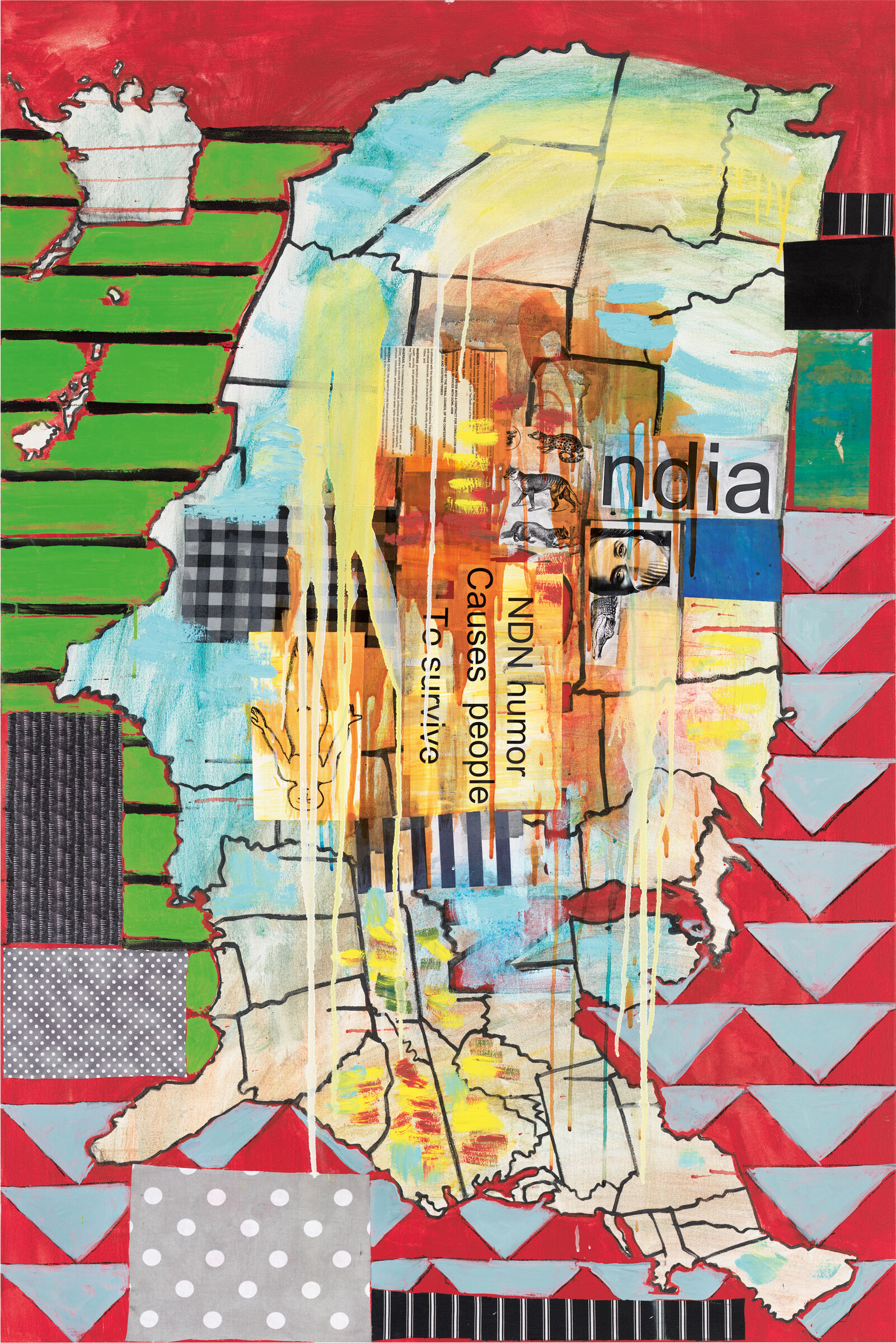Trade Canoe (Gifts for Trading Land with White People, 1992
Mar 28, 2023
0:00
Trade Canoe (Gifts for Trading Land with White People, 1992
0:00
Narrator: This is one of Smith’s earliest “Trade Canoes”. From the beginning, she drew on the importance of canoes to Native peoples in order to make complex statements about their experience of American history.
Jeffrey Gibson: I think for Indigenous people, it is mobility. It is the ability to be able to travel.
My name is Jeffrey Gibson. I'm an artist. I live in the Hudson Valley, and I'm a member of the Mississippi Band of Choctaw Indians and half Cherokee.
What's interesting about this painting is we don't know the direction. All the directions are removed. There is no front end of the canoe versus the back end of the canoe. It's empty and it's in a chaotic world that that version of the canoe doesn't really make sense.
All of the kind of text and imagery that she's put here are the things that have robbed us of knowing the Indigenous definition of a canoe. And I think putting the trash on the string above the painting, those are also just those images and those texts brought into object form, mass-produced all over the world, cheap and plentiful.
This painting of the canoe down below and all of the text and imagery that surrounds it speaks in the same way of this kind of difficult, challenging world for Indigenous people to find and navigate who they are as contemporary people, who they are as traditional people, who they are in relationship to their communities and their families. And then you hang this…I'm going to use the word trash, and I don't mean that, but I mean it sort of like this very much throwaway culture…this kitsch and camp racist memorabilia hanging above it on the string. I think it's sort of the audacity of this painting that makes it really successful.


